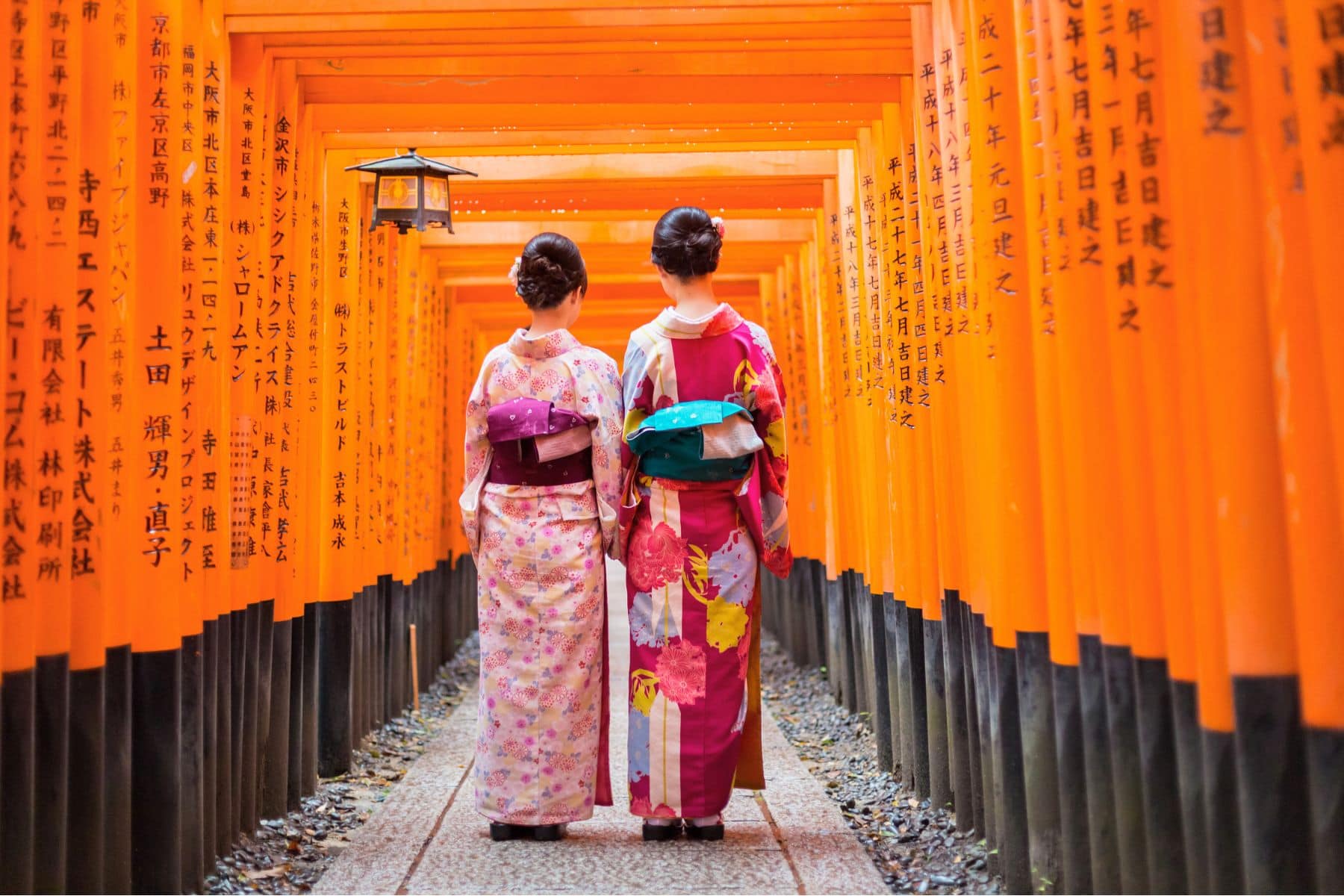Temples, Shrines, and Castles: Kyoto's Enchanting Secrets

Kyoto: A Journey Through Time and Tradition
Kyoto, the ancient capital of Japan, has been home to the Imperial family for over a thousand years. This rich history is reflected in the city's abundance of historical landmarks, with an estimated 2,000 shrines, temples, and castles spread throughout its streets. Today, Kyoto remains the cultural and historical heart of Japan, boasting 17 World Heritage Sites that attract travelers from around the globe. For those visiting Kyoto, the challenge lies in deciding where to start.
During our visit, we explored three iconic sites: Fushimi Inari Shrine, Sanju-sangen-do Temple, and Nijo-Jo Castle. Each of these locations offers a unique glimpse into Japan’s deep-rooted traditions and architectural marvels.
Fushimi Inari Shrine: A Pathway to the Divine
Dedicated to Inari, the Shinto deity of rice and agriculture, Fushimi Inari Shrine is one of the most recognizable symbols of Japan. It stands as the head shrine among the 30,000 Inari shrines across the country. The highlight of the shrine is the path of 10,000 bright orange torii gates that wind through the forest leading to the summit of Mount Inari. As I walked along this trail, I was struck by the sense of serenity and spiritual energy that surrounded me.
At the top of the mountain, personal Shinto shrines dedicated to deceased loved ones can be found, adding a deeply personal touch to the landscape. Alongside them are miniature vermilion shrines that line the lake at the peak. The shrine also features stone statues of the Inari Fox, believed to be messengers of the gods. Many visitors place red bibs around the foxes' necks for protection, a tradition that continues to this day.
Sanju-sangen-do Temple: A Masterpiece of Buddhist Art
Sanju-sangen-do Temple, founded in 1164, is a must-see for any traveler interested in Buddhist art and architecture. The temple is renowned for its 1,001 life-sized carvings of Kannon, the goddess of compassion, each with 42 arms and 11 faces. These intricate figures, made from Japanese cypress and covered in gold leaf, are arranged in 50 rows along the length of the longest wooden building in Japan, which has remained unchanged for 700 years.
The craftsmanship of these sculptures is awe-inspiring, and it's hard not to wonder about the skill and dedication required to create such a monumental work. The temple itself is designated as a National Treasure, and its beauty and historical significance make it a standout attraction in Kyoto.
Nijo-Jo Castle: A Testament to Power and History
Nijo-Jo Castle, built in 1603 during the Edo period, is a symbol of Japan's feudal past. It served as the residence of the Tokugawa Shogunate and played a key role in the country's political history. The castle is known for its ornate architecture, with secret compartments in the walls designed to protect the shogun during important meetings.
One of the most intriguing features of the castle is the "nightingale" floor, which creaks when stepped on to alert guards of intruders. While the authenticity of this feature is debated, the castle remains a powerful reminder of Japan's historical legacy.
Beyond Kyoto: Exploring Nara
A short trip from Kyoto brings visitors to Nara, the first permanent capital of Japan. The town is home to Todai-ji Temple, a UNESCO World Heritage Site housing Japan's largest bronze Buddha statue. Before reaching the temple, travelers are greeted by the sight of free-roaming Sika deer, considered sacred messengers of the gods. These deer roam freely within Nara Park, often approaching visitors for food.
Inside the temple complex, the Daibutsu Den (Buddha Hall) houses the massive 52-foot-tall bronze Buddha. Visitors can touch different parts of the statue, believing it will heal corresponding areas of their body. The experience of standing before such a monumental figure is humbling and unforgettable.
Kyoto’s Nightlife: Ponto-Cho and Gion
Kyoto's charm extends beyond its daytime attractions. The Ponto-Cho district, just a short walk from our hotel, offers a vibrant nightlife filled with narrow alleys lit by traditional lanterns. Restaurants lining the streets serve delicious local cuisine, and many have outdoor seating overlooking the Kamogawa River.
Across the bridge, the Gion Higashiyama neighborhood is known for its geisha culture, elegant teahouses, and traditional performances. Walking through these neighborhoods at night provides a glimpse into Kyoto's timeless beauty.
Kyoto is a city that captivates the soul, offering a blend of history, culture, and natural beauty. Whether exploring ancient temples, walking through serene forests, or enjoying the lively atmosphere of its districts, every moment in Kyoto feels like a step back in time.
Post a Comment for "Temples, Shrines, and Castles: Kyoto's Enchanting Secrets"
Post a Comment